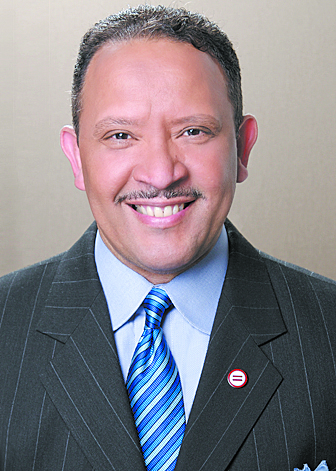Health
The Rush to Reopen Economy Risks Lives and Could Worsen the Economic Crisis

Marc H. Morial
President and CEO
National Urban League
“Researchers at the Harvard Global Health Institute estimate that the U.S. will have to have at least triple the number of tests carried out daily, from about 150,000 to 500,000, for the country to safely ease restrictions on local businesses and gatherings. That translates to 1.52 tests for every 1,000 individuals in the population. Only Rhode Island and West Virginia meet that standard.” – U.S.News & World Report
The number of Americans who have filed a claim for unemployment benefits hit 30 million this week.
The estimated unemployment rate is between 15% and 20%.
U.S. gross domestic product fell at a 4.8 percent annual rate in the first quarter of the year, the worst contraction since 2008. Economists expect the economy to shrink by 30% during the current quarter.
The COVID-19 pandemic has brought about the worst economic crisis in almost nine decades. We can’t begin to repair the damage until states can lift stay-at-home orders and people can go back to work.
So, the push to lift the orders immediately is not a surprise. But easing restrictions prematurely not only risks thousands of lives, but it could worsen the economic crisis.
A second wave of COVID-19 infections and deaths will force a second shutdown, putting even more stress on struggling businesses and state and local governments.
Economist Diane Swonk told Barron’s that under a safe reopening scenario, the plummeting GDP could level off, finishing the year at a 7% decline – the worst since 1946. But a rushed reopening could lead to a contraction of 10% or more for 2020.
Besides, lifting the lockdown is no guarantee that Americans will rush out and spend money. Millions are unemployed and have no money to spend, and those that can may remain isolated to protect their health.
Unfortunately, partisanship has threatened to turn the question of reopening into a political test rather than a question of measured, responsible public health management. Even in the face of the almost unimaginable current death toll of 61,000 and more than a million confirmed cases, right-wing operatives have promoted the conspiracy of a “hoax” around the virus. As early as two weeks ago – when no state was anywhere near meeting the guidelines – activists rallied at state capitols demanding immediate lifting of restrictions.
Despite the outsized media coverage heaped on the rallies, they did not represent the views of the vast majority of Americans, who even now support another two weeks of lockdown.
The truth is, the people demanding a premature reopening of the economy are the least likely to suffer either the consequences of the lockdown. Protesters carried signs reflecting their desire to play golf or get a manicure. They were demanding that other people return to work. And those other people – people in low-wage jobs with few protections — are the ones at highest risk for the disease.
Federal guidelines specify a 14-day decline in the number of new COVID-19 diagnoses before a state lifts stay-at-home restrictions. No state has met that benchmark.
The nation’s experience with the 1918 flu pandemic has shown us both the effectiveness of physical distancing restrictions and the tragic results of lifting those restrictions too quickly. Because different cities adopted different strategies, it’s possible to compare results. Cities that put physical distancing measures in place not only prevented unmanageable spikes in the rate of infection, but also kept the overall death toll down.
Cities that lifted those restrictions as soon as the number of flu cases began to subside saw a second, more severe wave of disease. Researchers who studied the infection rate found that no city experienced a second wave while physical distancing measures remained in place. Second waves occurred only after restrictions were relaxed.
The days ahead will not be easy. The President tweeted, in support of lifting restrictions, “We cannot let the cure be worse than the problem itself.” But he’s presenting a false choice. Our choice is not between saving the economy or saving lives. Our choice is between rebuilding the economy safely or risking thousands of lives and throwing the country into an even worse economic crisis.
That’s an easy choice to make.














